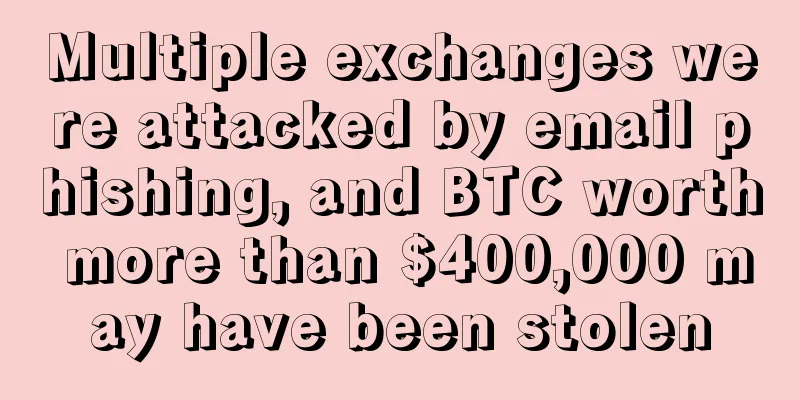Compiling the highlights of the BCH hash rate war is like watching 8 episodes of "Fast and Furious"

|
In the first two hours of January 16, 2018, people in the cryptocurrency community around the world "watched" the BCH hard fork battle together. At 01:52 on the 16th, after the SVPool mining pool mined the last public block, the BCH chain was split in half. Further mining would split it into the BCH ABC chain supported by Bitmain and the BSV chain led by CSW (Australian Satoshi). Some industry insiders have analyzed that whichever chain can mine 6 blocks ahead of the other chain will win. But nearly 2 hours after the two chains parted ways, the ABC chain was 6 blocks longer than the SV chain. Even before the release of this article, the ABC chain had slightly surpassed the SV chain (more than 16 blocks). But no one has declared victory or withdrawal. Data from coin.dance This money-burning game continues. Image from: hashwar, data as of 3:45 on the 16th In the two hours you slept, we saw the BCH upgrade delay, Bitmain’s airborne computing power surpassing the “enemy camp”, rumors of “being attacked”, and the SV chain gradually losing ground. Now, Odaily Planet Daily will review these scenes that were difficult to imagine in advance. Watch the game live, and eat melons like crazy Just like Cindy, a BCH community fanatic, said, BCH won anyway. This interesting hash war brought a lot of attention to BCH, and even affected BTC and the entire coin market. This forked coin, which ranks among the top five in market value, has never received such high attention as it does at this moment. Half a month before the fork, bigwigs such as Wu Jihan, CSW, Roger Ver ("Bitcoin Jesus"), and Vitalik Buterin started to "fight" on Twitter, followed by the media frequently exposing and interpreting the news, and even inviting representatives from both camps to live broadcast on the same stage. This can't help but remind people of the scene when candidates participated in TV debates during the US presidential election. One or two days before the war, all blockchain browsers/data websites were showing countdowns to the BCH fork. Other experts, through multi-person live broadcasts, came to witness the first “battle of the gods” in the blockchain world with everyone. Live from hashwar/live Interlude Under the attention of tens of thousands or even hundreds of thousands of users, some mainstream blockchain browsers crashed one after another. First, it was BTC.com of the Bitcoin mining pool, and then BTC.com again - its webpage fork.btc.com developed specifically for the BCH hard fork also stopped working when the battle between the two sides was stalemate. Another reason is that BCH postponed the fork time due to the incomplete network upgrade, which was delayed by more than an hour from the original 00:40 on the 16th. Bitmain made a big move, and suddenly surpassed CSW in computing power As expected, Bitmain eventually called in its "Kwantung Army". Less than half an hour before the fork, some media reported that as of 1:20 am on the 16th, the BCH computing power of Bitmain's mining pool (Bitcoin.com) had increased by 1593.09% in the past 24 hours to 4081.03 PH/S, surpassing the long-dominated Coingeek mining pool (from the Aussie camp) and ranking first; at the same time, the BTC computing power of the Bitcoin.com mining pool decreased by 48.56% from the past 24 hours to 235.96 PH/S. What happened is self-evident. Liu Changyong, director of the Blockchain Economic Research Center of Chongqing Technology and Business University (also a supporter of ABC), said that the computing power cut from bitcoin.com is equivalent to the total computing power of the entire BCH network yesterday. Therefore, the ABC chain has "an advantage" in computing power. From the data of BTC.COM before the hash war, we can see that the total hash rate of Bitmain’s mining pools btc.com, antipool, and viabtc is 16.15 Eh/s (=16150 Ph/s), which is 3.4 times the total hash rate of BCH. In theory, any amount of mining power can be used to control BCH. Does this sound scary? But in common sense, Bitmain has no motivation to "occupy" BCH, as doing so would easily lose the community's confidence in the security of the entire network. But now it is facing a life-and-death struggle, so it has taken this measure. Of course, because the actual computing power of the mining pool does not belong to Bitmain, Bitmain has to pay a considerable price for this. It uses computing power to mine the BCH ABC chain, which has a certain risk of zeroing out, and it has to pay out of its own pocket for the income that miners deserve when mining BTC. Wu Jihan talks about "breaking up": It feels like I have gotten rid of the demon At 01:52, BCH began to fork after the last public block was mined. CSW simply said: "Game on." Wu Jihan seemed to be unable to suppress his inner restlessness. He retweeted Jiang Zhuoer’s tweet announcing the fork and said: Congratulations! There will be no more troublemakers in the BCH community after this new block! There is a feeling of "escaping from the sea of suffering". The SV chain had difficulty in mining its first block. What happened? Just 14 minutes after the BCH fork, the ABC chain produced two blocks, while the SV chain on the other side did not move at all. This made many spectators feel that CSW had a bad start. I checked CSW's Twitter and found no updates. But the comments under the latest tweet were full of boos. CSW Twitter comments section As reflected in the data, the price of BCH SV on P.net has almost been halved. Although the SV chain successfully mined its first block 2 minutes later, it still couldn’t stop some spectators from expressing pessimism. Some even asked, “It’s declaring war when it has insufficient computing power. Is it shorting itself?” Of course, some domestic netizens are also looking for reasons in themselves. Weibo user @BitcoinGoldAnalyst wrote under a picture: "Aubencong (Cong) still lost a move in chess. I didn't expect the Chinese to be so united (Jian) (Zha) and actually teamed up to cheat." The picture mentioned by this netizen was posted by Zhu Yu, co-founder of CoinIn Mining Pool, in his WeChat Moments. Zhu Yu wrote that these two mining pools (huobi and btc.top) sent BCH computing tasks to BTC miners and were captured by pool.lol. The implication is that these mining pools arbitrarily misappropriated miners’ computing power to join the war, and both sides were inclined towards the ABC chain. Real or fake attack? When the two sides were engaged in a head-on battle, some industry insiders also made some speculations about the “attack,” mainly believing that the SV chain was attacking the ABC chain. 1. Empty Block Attack Digital currency commentator WhalePanda tweeted that before the Bitcoin fork, the SV chain seemed to have launched an empty block attack on the ABC chain. The empty block attack can only produce blocks but refuse to package transactions, thereby increasing the memory pool of transactions to be confirmed and lengthening the average transaction confirmation time. If the SV chain really launched this attack, its intention may be to delay time and prevent upgrades. WhalePanda said this based on the fact that the newly mined block No. 556757 was a 0 txs block. Although there were transactions to be recorded at the time, the block was not packaged. And the block was produced by an unknown mining pool, so it was somewhat suspicious. But later we saw that half an hour later, Bitmain's ViaBTC also mined "empty blocks". So, does that mean ViaBTC also launched an empty block attack? Therefore, this speculation did not continue. 2. Dust attack Jiang Zhuoer, the founder of Litecoin Mining Pool, is the main person who believes that the ABC chain has suffered a dust attack. A dust attack is when an attacker conducts a large number of low-value, low-fee junk transactions to occupy block space, causing normal and valuable transactions to be unable to be processed, thereby causing block congestion; at the same time, in order to seize the opportunity for transactions to be packaged, the market will naturally raise transaction fees, thereby affecting the actual applications based on the blockchain due to excessively high transactions. Of course, this statement (so far) has few supporters in the market. Jiang Zhuoer envisioned four possible outcomes for the computing power war. Will it be one of them?Now many onlookers are discussing how CSW should make his decision. Jiang Zhuoer once divided the results of the computing power war into split and non-split In the case where the ABC chain survives and the SV chain dies (or vice versa), BCH does not split; With the ABC chain inheriting BCH and the SV chain engaging in a long-term guerrilla war (or vice versa), BCH splits into two chains. Despite being at a disadvantage from the start, the miners on the SV chain did not stop their losses and are still giving it a try; CSW also seems to be holding on. Could it be that CSW, who once threatened to attack the BCH network if he failed, still wants to be the king and has no intention of becoming a bandit? “But I think guerrilla warfare is more like CSW’s style, haha.” said a bystander who was about to go to sleep after drinking the iron supplement. |
>>: How to watch the BCH hash rate war? Real-time battle table
Recommend
What is the fate of a man with a mole on the palm of his right hand?
In fact, there are traces to a person's desti...
The rat shit often stirs up family conflicts in the woman's face
Family conflicts are misunderstood by most people...
The face tells you what kind of people the wives of officials are
Some people are born to be the wives of officials...
Palmistry shows who is prone to disasters and difficulties
People often say that eight out of ten things in ...
How to understand the relationship between women's appearance and sexual desire
Sexual desire is a very private thing, so general...
Why is it important for the merger to shift ETH from inflation to deflation?
After the merger, ETH's net issuance turned f...
What are the five types of facial features that indicate that a person has descended from heaven?
People often joke that they are angels with broke...
What does Shan Gen represent in physiognomy? How can we predict our fate through Shan Gen?
Shan Gen represents the relationship with parents...
Mole diagram: What do moles on a man's body represent?
Physiognomy has been passed down from ancient tim...
Is it good to have a black mole in the Children's Palace? What does it represent?
As one of the traditional physiognomy techniques, ...
Is it good for a woman to have a big face and a small mouth? What is the fate of a woman with a big face?
Everyone has unique facial features. From the pers...
Coinbase Warns Crypto Provisions in Infrastructure Bill Could Affect 20% of U.S. Population
Oinbase’s vice president of global tax, Lawrence ...
California bankruptcy lawyer says Bitcoin is property, not currency
A U.S. district judge has ruled that Bitcoin is a...
How to read the thirteen palaces of face reading
According to physiognomy, the bridge of the nose ...
Judging spouse's appearance by face
Judging the appearance of a person's spouse m...









